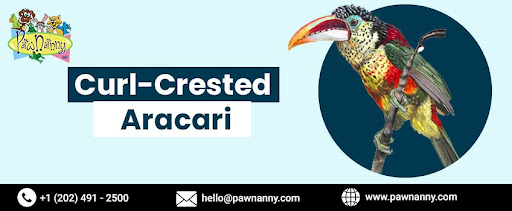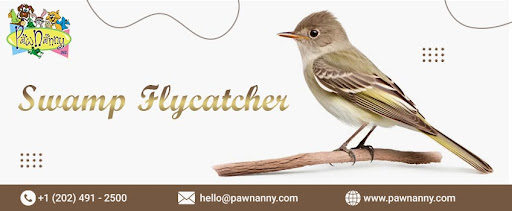
Curl-Crested Aracari
Scientific Name: Pteroglossus Beauharnaesii
Flock Members: Up to 20 members
Size: 16 inches
Weight: 7-10 ounces
Lifespan: 15-20 years
A.K.A.: Curl-crested Toucan or Beauharnaes’s Aracari
Behavior
The Curl-Crested Aracari is a fascinating bird breed known for its unique appearance and intriguing behavior. These toucans exhibit a range of behaviors that make them captivating to observe and study. Curl-Crested Aracaris are highly social birds that often live in small groups or flocks. They engage in various social interactions, including grooming each other and engaging in playful behavior. Their lively and curious nature makes them entertaining to watch as they explore their surroundings and interact with their environment. One of their distinctive behaviors is the curling of their prominent crest feathers. They can raise or lower their crests depending on their mood or level of excitement. When excited or during courtship displays, their crests may become more pronounced, creating an impressive visual spectacle.
These birds are also known for their vocalizations, which include a combination of sharp calls, chatters, and croaks. They use these vocalizations to communicate with other flock members, establish territory, and convey emotions. Curl-Crested Aracaris are agile and acrobatic birds. They are skilled at hopping and climbing through tree canopies, using their strong beaks and feet to navigate their environment. They are also known for their adept flying abilities, gracefully maneuvering through the trees. During breeding season, Curl-Crested Aracaris engage in courtship displays, which involve ritualized behaviors such as bill-touching, head-bobbing, and wing-flapping. Both males and females participate in nest construction and share parental duties, including incubation and feeding of the chicks.
In captivity, Curl-Crested Aracaris require ample space and enrichment to fulfill their natural behaviors. Providing perches, toys, and opportunities for flight and exploration helps to stimulate their active nature.
History
The history of the Curl-Crested Aracari is intertwined with the lush rainforests of South America. These unique and colorful birds have captured the fascination of bird enthusiasts and researchers for many years. The Curl-Crested Aracari, scientifically known as Pteroglossus Beauharnaesii, is native to the Amazon rainforest and other regions of South America. They are part of the toucan family and belong to the Ramphastidae family, which includes a diverse array of species. The exact historical origins of the Curl-Crested Aracari are not extensively documented. However, they have been part of the rich biodiversity of the rainforests for centuries. Their striking appearance and intriguing behaviors have made them a subject of interest for explorers, naturalists, and ornithologists.
European explorers encountered these beautiful birds during their expeditions to South America. Subsequently, they gained popularity as exotic pets and aviary birds. Their unique features, including the curled crest and vibrant plumage, made them sought-after additions to private collections and zoos around the world. The Curl-Crested Aracari has also been observed and studied in its natural habitat. Researchers have sought to understand their behavior, ecological role, and conservation needs. Efforts have been made to protect their rainforest habitats and raise awareness about the importance of preserving biodiversity in these regions.
Today, Curl-Crested Aracaris continue to thrive in the rainforests of South America. However, the destruction of their habitat due to deforestation and illegal pet trade pose significant challenges to their long-term survival. Conservation organizations and researchers continue to work towards protecting the rainforests and raising awareness about the importance of preserving the Curl-Crested Aracari and other species. Their history and presence in the rainforests serve as a reminder of the remarkable biodiversity found in these ecosystems and the need for conservation efforts to safeguard their future.
Breeding
Breeding the Curl-Crested Aracari in captivity requires careful attention to their unique reproductive behaviors and specific environmental conditions. Curl-Crested Aracaris are monogamous birds that form strong pair bonds. Breeding season typically occurs during the rainy season when food availability is abundant. In preparation for breeding, it is crucial to provide the birds with spacious aviaries that mimic their natural habitat, including plenty of perching options and nesting opportunities.
During courtship, the male and female engage in elaborate displays to strengthen their bond. These displays may include bill-touching, head-bobbing, wing-flapping, and vocalizations. They also engage in mutual preening to reinforce their pair bond. Once the pair has bonded, the female will select a suitable nesting site, typically a cavity in a tree or a specially designed nest box. The female is responsible for constructing the nest, using leaves, twigs, and other plant materials. In captivity, providing suitable nest boxes with appropriate dimensions and materials is crucial.
The female will lay a clutch of 2-4 eggs, which she incubates for about 16-18 days. Both parents participate in incubation and share the responsibilities of keeping the eggs warm and protected. After hatching, the parents feed the chicks regurgitated food, primarily consisting of fruits and insects. The chicks grow rapidly and develop their distinct plumage within a few weeks. They fledge from the nest around 6-7 weeks of age. It is essential to provide a suitable diet rich in fruits, insects, and a commercial pellet mix to support their growth and development.
Food & Nutrition
Proper nutrition is essential for the health and well-being of Curl-Crested Aracaris. These birds have specific dietary requirements that must be met to ensure their optimal growth and vitality. In the wild, Curl-Crested Aracaris primarily feed on a diverse range of fruits, insects, small vertebrates, and nectar. In captivity, replicating their natural diet is crucial to maintain their overall health. The foundation of their diet should consist of a high-quality commercial pellet formulated specifically for toucans or softbills. This pellet should be the main component of their daily meals.
Supplement the pellet diet with a variety of fresh fruits such as papaya, apple, banana, and berries. These fruits should be provided in small, bite-sized pieces. Additionally, offering small amounts of insects, such as mealworms or crickets, provides a source of protein that is important for their overall well-being. Curl-Crested Aracaris are also known to consume nectar from flowers in the wild. You can provide a small amount of nectar substitute or diluted fruit juice as a treat, but it should not be a significant part of their diet.
It is crucial to avoid feeding them foods that are toxic to birds, such as avocado, chocolate, caffeine, alcohol, and excessive amounts of salt or sugar. Freshwater should always be available and changed regularly to ensure cleanliness and hydration. Supplementing their diet with a calcium and vitamin D3 supplement is recommended to support bone health and prevent deficiencies.
Conclusion
As a pet, Curl-Crested Aracaris can be captivating and engaging companions. Their striking appearance, lively behavior, and intelligence make them a popular choice for bird enthusiasts. However, they require dedicated care, spacious aviaries, and a specialized diet to thrive. In the wild, Curl-Crested Aracaris play an important role in the ecosystems of the rainforests of South America. They contribute to seed dispersal and pollination as they feed on fruits and insects. Their vibrant plumage and vocalizations add to the rich biodiversity of their natural habitats.
Whether as pets or in the wild, Curl-Crested Aracaris bring a sense of beauty and wonder. As pets, they require responsible ownership and a commitment to providing them with a suitable environment that mimics their natural habitat. In the wild, they serve as valuable contributors to the intricate web of life in the rainforests, showcasing the diversity and importance of these ecosystems. For more information, visit Pawnanny.com .










